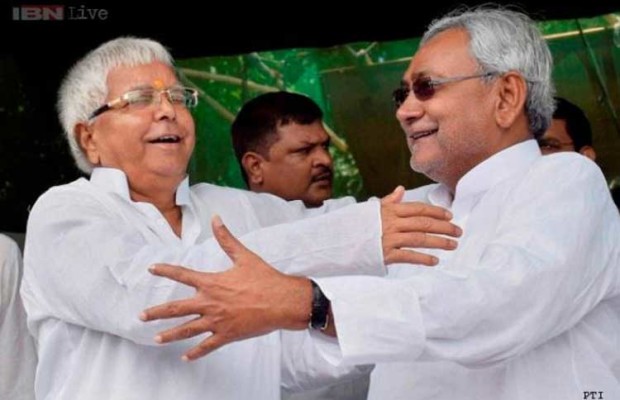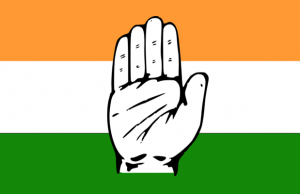BIHAR ELECTIONS … THE GREAT LEVELLER

For the first time in nearly two decades the Indian National Congress can hope to touch 20 plus seats in the Bihar assembly when ballot boxes are opened on November 8. The previous record of the Congress was 29 seats.
However, this time around the Congress is in a far better situation electorally speaking and can hope to get little more than 25 seats out of the 40 it has been offered. The combine of Nitish Kumar’s Janta Dal-United (JD-U), Lalu Prasad Yadav’s Rashtriya Janta Dal (RJD) and Congress is in a position to touch the magic figure of 150. The contesting of a few dozen seats by Asaduddin Owaisi’s All India Majlis-e-Ittehadul Muslimeen (AIMIM) will affect the secular coalition perhaps adversely. At the same time the total absence of the Modi wave in the 2015 Bihar election is making it difficult for the Bharatiya Janata Party (BJP) to touch even ninety seats.
The upcoming Bihar elections are going to be crucial for the BJP because the credibility of Prime Minister Narendra Modi himself is at stake. The wave that was easily discernible in the 2014 Parliamentary election is nowhere in the urban, semi-urban or rural areas of Bihar.
It was in the year 2000 when Bihar witnessed a wave-less election when the electorate threw a hung assembly. Nitish Kumar was then the leader of the BJP-JD (U) combine and had a week long stint in office. RJD and Congress subsequently formed a coalition government that ran for full time. Prior to the 2000 elections, Mandal wave brought Lalu Prasad Yadav back to power with a thumping majority and Nitish Kumar’s Samata Party ended with a single digit tally.
It is not that there is a shortage of issues. But nobody is bringing those issues into the ongoing Public discourse. The political crisis facing the country is more serious than what the present day politicians perceive. But, except Congress, nobody is talking about the real issues in this election. BJP talks about development, but nobody believes their slogans as Modi government in Centre has failed miserably in delivering on almost all fronts in last 15 months. People also understand that only a secular government can ensure progress. All talk of development does not hold water unless any rule promotes a progressive mindset. For Lalu, more than anything else, the most important thing is to stop the possible Brahmanical takeover of the state. Therefore, he is working on a design that would give him the largest share of the electoral success even at the cost of other coalition partners. Nitish Kumar is being warned by his people that there are chances that RJD gets little more seats than JD-U, and the situation can create hurdles in his way to becoming coalition’s chief minister. The Congress is somehow trying to keep issues like poverty, price rise, rising inequality in education and health from being relegated to the foot note of the election story. But, Congress has its own problems. It has a large number of very enthusiastic leaders who are keen to contest election but equally unenthused cadre that was neglected for decades by the state leadership.
Congress had an illustrious past in Bihar. Till Mandal era that began in 1990, Congress used to get more than 50 half the seats in Bihar assembly. From the time of Sri Krishna Sinha, Binodanand Jha, Mahamaya Prasad Sinha, Krishna Ballabh Sahay, B.P. Mandal to Kedar Pandey, Abdul Ghafoor, Jagannath Mishra, Chandra Shekhar Singh, Bindeshwari Dubey, Bhagwat Jha Azad and Satyendra Narayan Singh; Congress’ vote share had always been over 30 percent and touching up to 42 percent. Even during Janta Party wave in 1977, Congress was the second largest party in Bihar with more than 23 percent vote share. Even in 1990 Congress got around 25 percent votes. In 2010, assembly election, it was only little more than 8 percent. In 2014, Parliament election, though the increase in vote percentage of the Congress party was very marginal, it got highest votes in 14 assembly segments leaving behind any other political party. Amid the so called Modi wave, leading in more than two dozen assembly constituency is certainly a hope for Congress in coming assembly election.
With the backing of 15 percent Yadav, 16 percent Muslims, 10 percent Mahadalits, 3 percent Kurmis and a large chunk of 22 percent Most Backward Castes, the secular alliance has a strong potential of keeping BJP at a comfortable distance from forming the next government in Bihar. What worked in Haryana, Maharashtra and Jharkhand are not going to work in Bihar for BJP. Modi graph is on a downward trend nationally, and this fact has to reflect in Bihar election. After Delhi, Bihar is crucial for BJP and the outcome of Bihar is going to set the next course of vast political grammar. We will have assembly elections in Tamil Nadu, Kerela, Puducherry, Assam and West Bengal next year and in Goa, Manipur, Punjab, Uttarakhand and Uttar Pradesh in 2017. India will have its new President and Vice President also in July-August 2017. Therefore, the importance of Bihar assembly election is multi-dimensional.




You must be logged in to post a comment Login